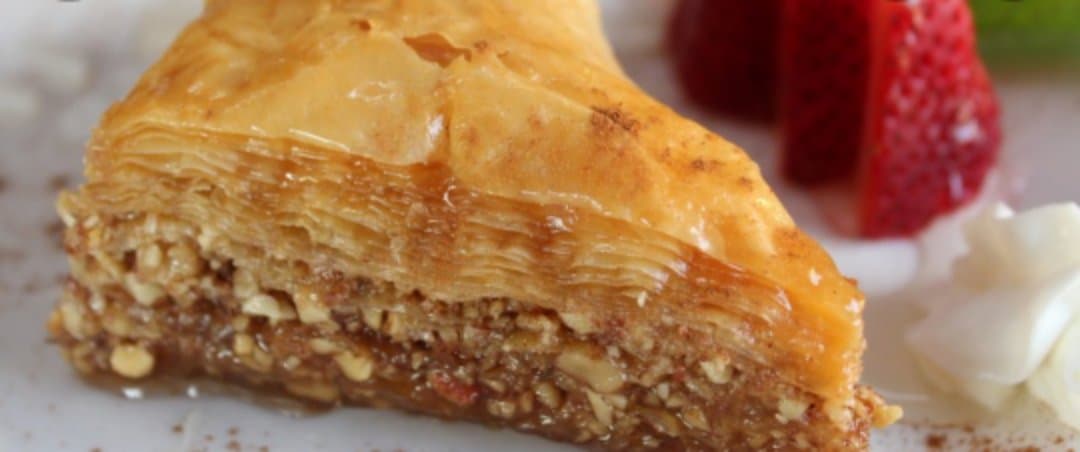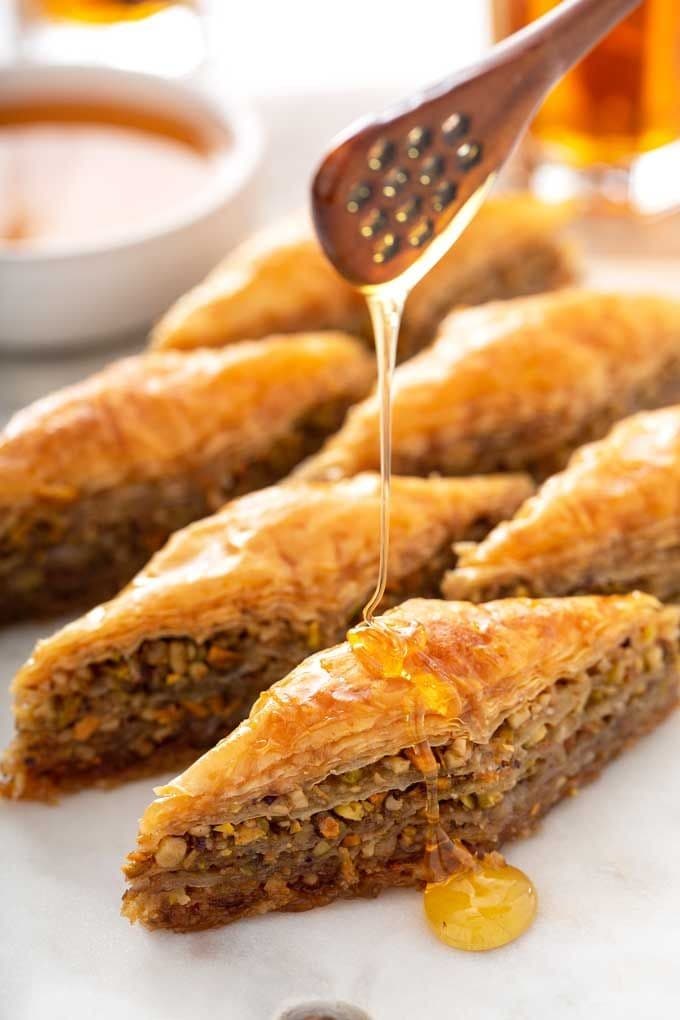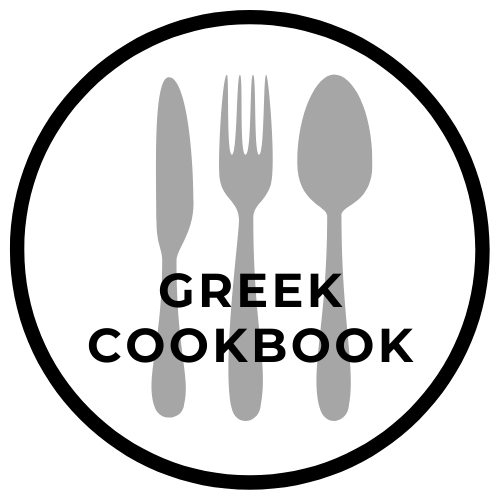Baklava – traditional dessert of Greek cuisine.
Baklava is a traditional Greek baked dessert, also popular in Turkish, Bulgarian and Persian cuisines.The dessert is prepared from the so-called leaf dough, in Greece called phyllo dough. This dough is translated with a layer of nuts (most often pistachios), but also often Italian or almonds.

The history of the dessert. Baklava is a delicacy whose origin is very difficult to establish.Both the Greeks and Turks believe that baklava was their idea. In Poland, baklava (or rather baklava) is not well known, but when going on vacation to the Baltic countries, Poles have the opportunity to taste this dessert. You can definitely say that baklava comes from the Ottoman Empire. From the 15th century on, this dessert was prepared at the Palace of Constantinople. Later, other civilizations began to change this dish and adapt it to their own culture.The Greeks created the phyllo dough, which is now the basis of baklava, while the Armenians added spices such as cinnamon and nutmeg to the dessert.

Baklava recipe.
• approx. 500 g of filo pastry (2 packages, i.e. approx. 24 sheets) *
• 500 g of walnuts
• 2 teaspoons of cinnamon
• 1/4 cup of sugar
• 300 g clarified butter, melted **
• pistachios, finely chopped, for garnish
Syrup:
• 1½ cup of sugar
• 3/4 cup of water
1 teaspoon of orange blossom water (I added freshly squeezed orange juice)
First, prepare the syrup (it must cool down). Pour water into a small pot, add sugar and orange blossom water. Boil until sugar is dissolved. Cook over low heat until a syrup is obtained (about 10 minutes). Set aside to cool.
Put the nuts, cinnamon and sugar in a food processor (you can also use a blender) and blend them so that the nuts are finely chopped (in my opinion it looks best when some is ground and some only chopped).
Prepare a mold with dimensions of 23 x 30 cm. Brush with butter. Working with one piece of dough (the rest remains under the cloth so that it does not dry out), place it on the bottom of the mold and brush it with butter using a brush. Put another piece of phyllo dough on it and brush it with butter again. There should be a total of 8 layers of filo pastry on the bottom, each buttered. Then put half of the prepared nuts, align. Put 4 sheets of phyllo dough on top of the nuts, brush each with butter. Place the rest of the nuts in turn and align. Cover the nuts with 12 sheets of phyllo dough, each separately greased with butter, including the top layer. Use a sharp knife (maybe with a ball) to cut the dough into diamonds, squares or triangles (as you like), cutting them almost to the bottom layer (after baking it would be difficult cut).
Bake at 140ºC for about 2 hours, until the dough is golden. Take out and pour the evenly cooled syrup over the still hot cake. Garnish with finely chopped pistachios. Set aside to cool.
The cake is best for the second or third day.
Sometimes the purchased filo sheets may be larger, then they should be cut to the size of the mold (divided in half).

Review
The first one in Greece I've always wanted to try Baklava, the cake itself doesn't look very appetizing, but the taste is delicious, I can't wait to eat again.
